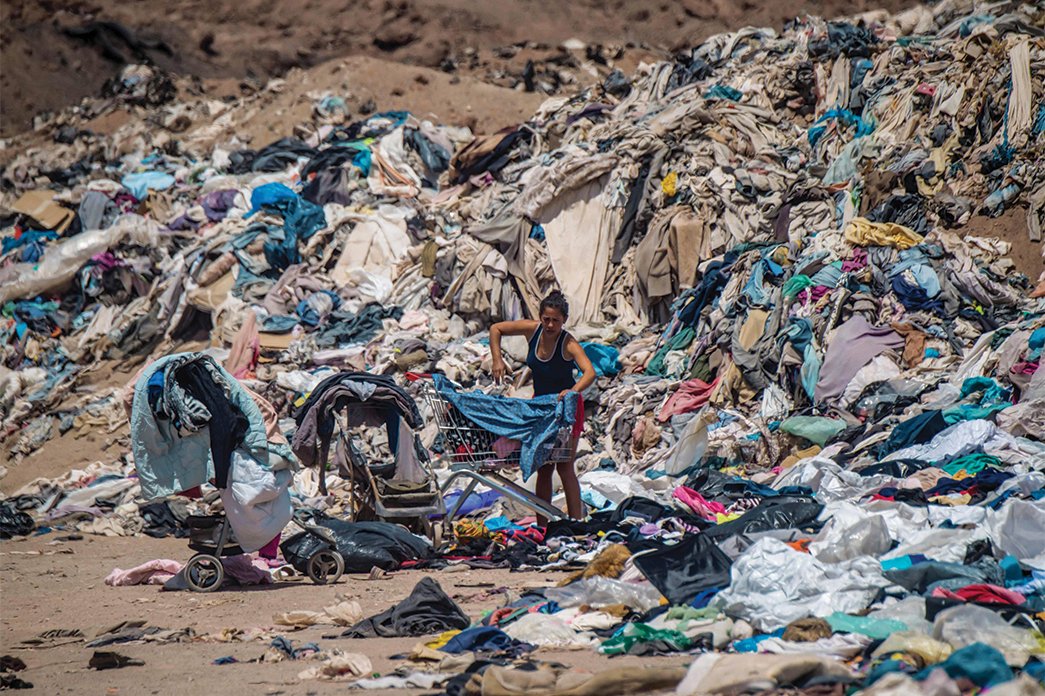
There is an industrial revolution underway, at full steam. All of it with a clear goal of making operations more efficient, with fewer losses. Obviously artificial intelligence takes a prominent place here. Most production processes are modernised using this resource. But there is a concept that must go hand in hand with all this: sustainability. Simply put, nowadays it is inconceivable for digital evolution not to accompany a more responsible and economical use of available resources. And the whole industrial context requires organisations to debate and closely monitor this evolution. That is why countries frequently come together to discuss the issue and make short and long term pacts. This isn’t just about an individual decision anymore. Consumers demand that the products that end up in their hands respect rules. This has led businesses and factories to change many of their behaviours in order to become increasingly sustainable.
In this regard, there are some indicators that show the clear benefits generated by Industry 4.0 automated systems: cost reduction, energy savings, smarter design, reduced use of raw materials, waste recycling and environmental conservation.
For example, there is already a smartphone app, Nuw, created in Ireland, which allows users to exchange clothes they rarely wear with each other, instead of throwing them in the bin. In the Philippines, clothing company Phinix collects textile waste and turns it into shoes and bags, making these products only having 10% of the carbon footprint of normal clothes. Finally, by recycling and avoiding plastic packaging, Brazilian clothing company Refazenda has eliminated the production of solid waste (zero waste). These are just three models of a growing number of ideas that want to counter the environmentally destructive trend called ‘fast fashion’.
«The fashion industry has long been criticised for the impact it has on the environment»
And why did we look to the clothing industry? Because only now most consumers are beginning to oppose the voracious demand for cheap clothes, something that has turned the textile sector into one of the most polluting in the world. It is estimated that it is responsible for around 8% of the world’s greenhouse gas emissions. To get an idea, producing one kilo of textiles requires the use of more than half a kilo of chemicals, as well as consuming huge amounts of water.
«The fashion industry has long been criticised for the impact it has on the environment,» points out Elisa Tonda, head of the Consumption and Production Unit of the UN Environment Programme (UNEP), before adding, «at the same time, there is a lot of innovation happening right now, which bodes well for the future.» The expert was answering some questions ahead of the UN Environment Assembly (UNEA), an entity that is about to see the launch of a Global Alliance on Circular Economy and Resource Efficiency, established by UNEP, the European Commission and the UN Industrial Development Organisation (UNIDO). This commitment builds on existing regional initiatives (such as the African Circular Economy Alliance) to accelerate the transition to a global circular economy through a more efficient and equitable use of resources. It also promotes sustainable consumption, production and industrialisation.
The economic recovery from COVID-19 offers a rare opportunity to dramatically change the dirtection of many industries, including textile.
Circularity and sustainability also make economic sense for businesses, the data suggests. Before the pandemic, only 60% of clothing was sold at full price, creating many millions of dollars of lost revenue. Smart product design has the potential to eliminate production waste and reduce pollution throughout the processing stage, helping companies to save money. Circularity would also be good for the climate. Instilling and normalising other business habits, such as clothing rental and repairs, could help the industry to reduce greenhouse gas emissions by around 143 million tons by 2030.
The UNEA is the highest level decision making body in the world on the environment. It brings together representatives from the 193 UN Member States, businesses, civil society leaders and other stakeholders to agree on policies that combat climate change, pollution and loss of biodiversity. The next face-to-face session of the UNEA is expected to take place in Nairobi, Kenya, in February this year.
In this regard, there are some indicators that show the clear benefits generated by Industry 4.0 automated systems: cost reduction, energy savings, smarter design, reduced use of raw materials, waste recycling and environmental conservation.
For example, there is already a smartphone app, Nuw, created in Ireland, which allows users to exchange clothes they rarely wear with each other, instead of throwing them in the bin. In the Philippines, clothing company Phinix collects textile waste and turns it into shoes and bags, making these products only having 10% of the carbon footprint of normal clothes. Finally, by recycling and avoiding plastic packaging, Brazilian clothing company Refazenda has eliminated the production of solid waste (zero waste). These are just three models of a growing number of ideas that want to counter the environmentally destructive trend called ‘fast fashion’.
«The fashion industry has long been criticised for the impact it has on the environment»
And why did we look to the clothing industry? Because only now most consumers are beginning to oppose the voracious demand for cheap clothes, something that has turned the textile sector into one of the most polluting in the world. It is estimated that it is responsible for around 8% of the world’s greenhouse gas emissions. To get an idea, producing one kilo of textiles requires the use of more than half a kilo of chemicals, as well as consuming huge amounts of water.
«The fashion industry has long been criticised for the impact it has on the environment,» points out Elisa Tonda, head of the Consumption and Production Unit of the UN Environment Programme (UNEP), before adding, «at the same time, there is a lot of innovation happening right now, which bodes well for the future.» The expert was answering some questions ahead of the UN Environment Assembly (UNEA), an entity that is about to see the launch of a Global Alliance on Circular Economy and Resource Efficiency, established by UNEP, the European Commission and the UN Industrial Development Organisation (UNIDO). This commitment builds on existing regional initiatives (such as the African Circular Economy Alliance) to accelerate the transition to a global circular economy through a more efficient and equitable use of resources. It also promotes sustainable consumption, production and industrialisation.
The economic recovery from COVID-19 offers a rare opportunity to dramatically change the dirtection of many industries, including textile.
Circularity and sustainability also make economic sense for businesses, the data suggests. Before the pandemic, only 60% of clothing was sold at full price, creating many millions of dollars of lost revenue. Smart product design has the potential to eliminate production waste and reduce pollution throughout the processing stage, helping companies to save money. Circularity would also be good for the climate. Instilling and normalising other business habits, such as clothing rental and repairs, could help the industry to reduce greenhouse gas emissions by around 143 million tons by 2030.
The UNEA is the highest level decision making body in the world on the environment. It brings together representatives from the 193 UN Member States, businesses, civil society leaders and other stakeholders to agree on policies that combat climate change, pollution and loss of biodiversity. The next face-to-face session of the UNEA is expected to take place in Nairobi, Kenya, in February this year.








